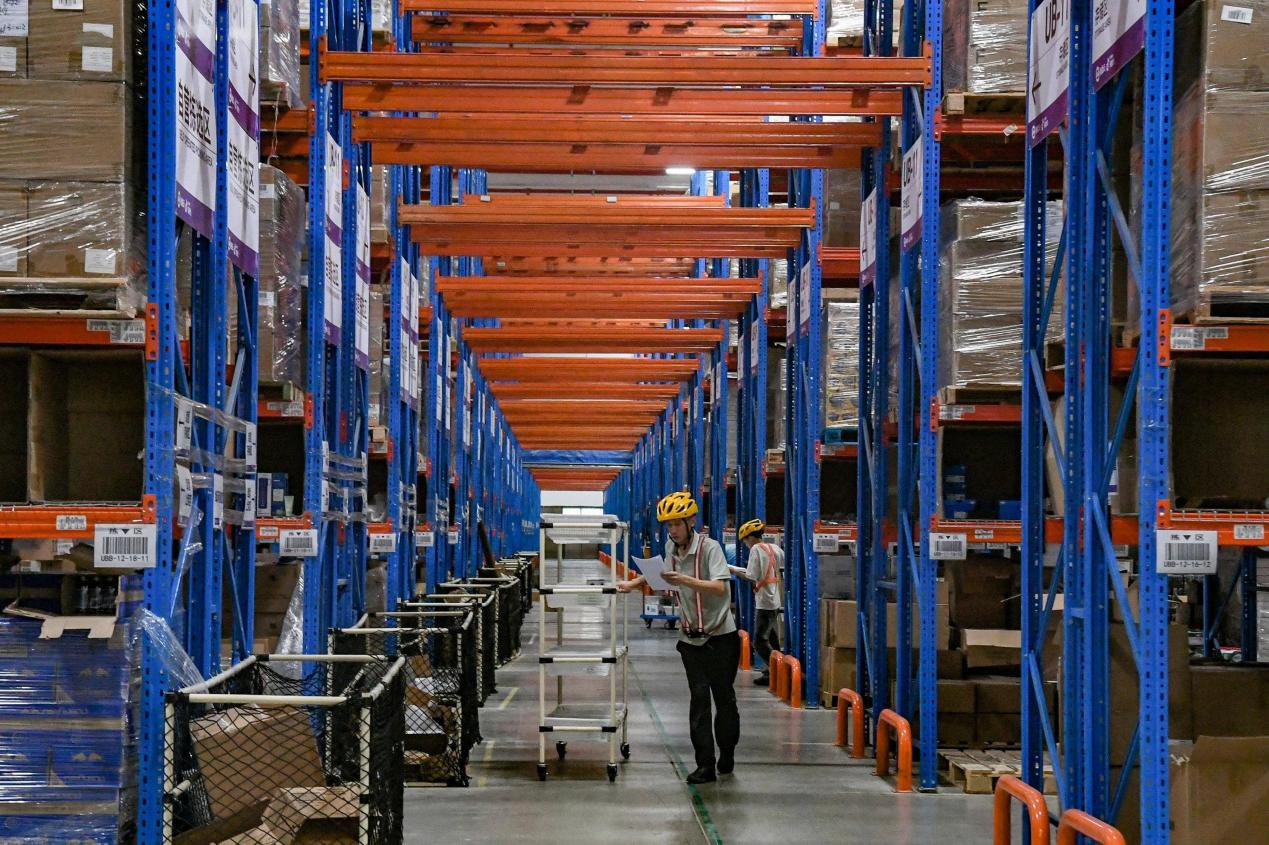




- BRNN
- BRI News
- BRNN News
- Database
Official Documents Polices and Regulations
Inter-government Documents International Cooperation BRI Countries
Business Guide Economic Data BRI Data
Trade
Investment Projects Latest projects
Cases - Content Pool

Photo shows a cross-border e-commerce warehouse in Jinyi Comprehensive Bonded Zone in Jinhua, east China's Zhejiang province. (Photo/Shi Kuanbing)
As an important indicator reflecting the vitality of China's external economy, cross-border capital flows have demonstrated consistent growth over the past five years. In 2024, China's total cross-border receipts and payments reached $14 trillion, marking a 64 percent increase from 2020. In the first three quarters of this year alone, the total reached $11.6 trillion, up 10.5 percent year on year, with cross-border trade and investment activities maintaining robust momentum.
What new changes have taken place in China's foreign exchange market over the past five years? Let's look at it from three perspectives—
Balance of Payments: Expanding Scale, Enhanced Stability
China's foreign trade resilience continues to drive growth in goods trade. Recent data from the State Administration of Foreign Exchange (SAFE), from 2021 to 2024, the annual average scale of goods imports and exports under the balance of payments reached nearly $6 trillion - an increase of almost 43 percent compared with the average during the 13th Five-Year Plan period (2016-2020).
Amid global economic shifts, China has steadily advanced manufacturing upgrades, ensuring the stability of its external economy. For instance, the recent export of 13.3 tons of fresh grapes from Dunhuang to Panama - a first for the region - exemplifies how Chinese enterprises like Gansu Benyuanxing Agricultural Products Co., Ltd. are leveraging local resources to expand internationally.
Alongside goods trade, two-way investment flows have grown steadily. From 2021 through the first half of 2025, net foreign investment inflows into China exceeded $740 billion.
Maintaining balanced cross-border flows has strengthened China's external financial position. By June 2025, China's external financial assets surpassed $11 trillion. With net external assets of $3.8 trillion, China now ranks third globally in this category.

Workers manufacture smart beds to be exported in a workshop of a furniture company in Quanzhou, southeast China's Fujian province. (Photo/Xie Guiming)
Services: Enhanced Environment and Improved Convenience
Trade facilitation policies have significantly streamlined cross-border payments. Li Tianpeng, Chief Financial Officer of Mintal Group based in Linyi, east China's Shandong province, highlighted this improvement: "The efficiency of cross-border fund settlement has improved significantly."
Mintal Group, which exports building materials such as boards and wall panels, frequently requires cross-border settlements. "In the past, we had to prepare a lot of documents and spend much time communicating with banks. Now, a single receipt transaction can be completed very quickly," Li said.
This efficiency is reflected in their activity - in just the first half of this year, the company processed over 3,000 cross-border receipt transactions totaling more than $64 million.
During the 14th Five-Year Plan period (2021-2025), SAFE has advanced trade-related foreign exchange facilitation policies targeting high-quality enterprises, deepening the credit-based incentive mechanism categorized by enterprise and business type, and fostering a business environment where "greater integrity brings greater convenience." By the end of September 2025, related facilitation transactions nationwide had totaled about $4.7 trillion.
In recent years, cross-border e-commerce has flourished. Characterized by small, frequent, large-volume, and online transactions, cross-border e-commerce requires more efficient settlement services than traditional offline methods can provide.
To meet this need, SAFE has leveraged technology to empower financial institutions, supporting qualified banks and payment institutions in bulk verification of electronically generated transaction data, such as online orders and logistics information, thus enabling efficient, convenient, and secure foreign exchange settlement services for enterprises.
Since the start of the 14th Five-Year Plan period, more than 1.3 million micro and small merchants engaged in cross-border e-commerce have been served by banks and payment institutions, which have processed about 5.6 billion related transactions.

Photo shows Qianwan Container Terminal of Qingdao Port in east China's Shandong province. (Photo/Han Jiajun)
Openness: Higher Levels and a More Refined Structure
On Oct. 17, Suzano, a giant in commercial pulp production from Brazil, successfully issued Panda Bonds worth 1.4 billion yuan ($196.36 million) in China's interbank bond market.
Panda Bonds refer to yuan-denominated bonds issued by overseas institutions in the Chinese onshore market. Since 2023, the Panda Bond market has continued to expand. According to relevant statistics, total issuance has now exceeded 1 trillion yuan.
This expansion reflects China's deepening institutional openness in the foreign exchange sector during the 14th Five-Year Plan period (2021-2025). A series of policy measures - including improved management of Panda Bond funds - have been introduced and implemented at a faster pace. SAFE, together with other departments, has continued to advance financial market reform and opening up in a steady and orderly manner, improving the multi-channel, multi-level framework for two-way financial market openness. As a result, the value of domestic securities held by overseas investors has risen by 6 percent compared with the beginning of the 14th Five-Year Plan period.
"Looking ahead to the 15th Five-Year Plan period (2026-2030), we will make the foreign exchange management system more convenient, more open, more secure, and more intelligent, making new and greater contributions to advancing Chinese modernization," said Zhu Hexin, deputy governor of the People's Bank of China and head of SAFE.

Tel:86-10-65363107, 86-10-65368220, 86-10-65363106